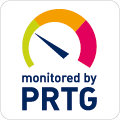
So you have a website for your business or organization but it seems like its under-performing. Marketing and aesthetics are great but sometimes a websites usability is all too often neglected. Just as easily, you may be getting traffic to your website but have the opposite problem. An easy to use website that’s well developed and poor in appearance can hold you back as well. Unfortunately, if users aren’t having a good experience once they get to your website then its likely they will leave without taking any action.
Where to begin?
Fortunately, there are useful ways to approach our problems. Analytics, Heatmaps, Eye Tracking, Feedback, and A/B Testing are the tools we need to identify our issues, address our issues and evolve to meet the needs of our audience. A professional opinion from a UX expert is also a valuable option to be considered.
Analytics
The very first thing you should always do when setting up a new website is to begin tracking activity on your site with Google Analytics. You can gain a lot of helpful insight into how your customers come to visit your site, what they do when they are there and how often the convert to sales. Learning more about customer behavior is the very best thing you can do to grow and adapt to your customers.
Heatmaps
Analytics data can’t tell you everything, there are various other tools out there to help us and to compliment analytics in our search to better understand and to learn customer behaviors. One of these such tools is called a “Heatmap”. By tracking users cursor movement, scrolling and even screen touches we can better identify which parts of the website visitors are concentrating on.
Feedback
Sometimes the best way to find out what people think is to just ask them. You can try asking for feedback on your website. Maybe a question at the end of the checkout process. You could even send out surveys to your existing customers.
Eye Tracking
This is a more obscure option that fewer will use. It is costly which makes it less appealing for many of us. The idea is simple though, by using cameras and software to analyze members of a focus groups eye movements as they enter our website and look around we can determine high priority locations in the same ways we used a Heatmap.
A/B Testing
This is the very last one mentioned here because it needs to take special priority. Without testing you can’t truly know what will work best. Data is good. Data tells us what behaviors already look like. Learning to adapt to those behaviors means trying new things, analyzing that data and comparing results to find the most efficient way to move forward.
UX Professional
If all else fails, ask a professional to audit your site. This can be costly and for many of us this is a last resort but can really get you back on track if you are lost.








